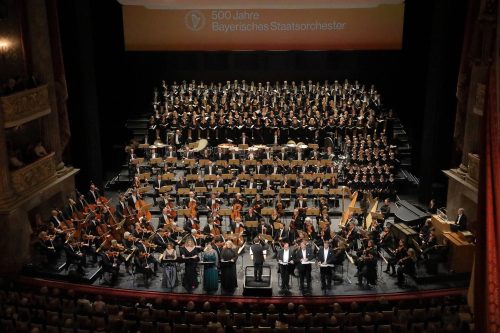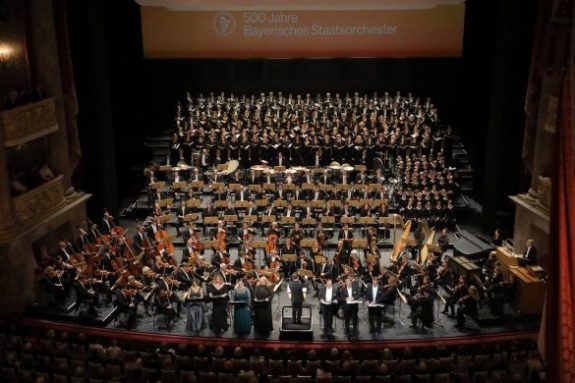 Germany Mahler: Staatschor Latvija, Tölzer Knabenchor, Chorus and Orchestra of the Bayerisches Staatsoper / Kirill Petrenko (conductor), Nationaltheater, Munich, 8.10.2023. (ALL)
Germany Mahler: Staatschor Latvija, Tölzer Knabenchor, Chorus and Orchestra of the Bayerisches Staatsoper / Kirill Petrenko (conductor), Nationaltheater, Munich, 8.10.2023. (ALL)

Mahler – Symphony No.8 in E-flat major ‘Symphony of a Thousand’
Rachel Willis-Sørensen (soprano/Mater Gloriosa)
Johanni van Oostrum (soprano/Magna Peccatrix)
Jasmin Delfs (soprano/Una poenitentium)
Jennifer Johnston (mezzo-soprano/Mulier Samaritana)
Okka von der Damerau (mezzo-soprano/Maria Aegyptiaca)
Benjamin Bruns (tenor/Doctor Marianus)
Christoph Pohl (baritone/Pater Ecstaticus)
Georg Zeppenfeld (bass/Pater Profundus)
Chorus masters – Johannes Knecht, Māris Sirmais, Christian Fliegner
A week after Mahler’s Sixth Symphony was performed in Munich by the Bavarian Radio Symphony Orchestra under the baton of Sir Simon Rattle, here comes, and it is no small feat, the Eighth, the ‘Symphony of a Thousand’ conducted by Kirill Petrenko.
On this occasion, Petrenko was making his return to the Bavarian State Opera since his departure as musical director at the end of the 2019-2020 season. His visit, as Serge Dorny reminded us in a brief preliminary speech, is part of the concert programme of the Bavarian State Orchestra, which, following Zubin Mehta last season, will see the return to the podium of another of its former principal conductors, Kent Nagano.
But this evening, all eyes were indeed on Petrenko, welcomed with particular enthusiasm by his audience as soon as he stepped on the podium. Many would have taken time for celebration, but true to himself, he almost immediately turned to cue the start of the Mahler symphony.
There was a striking absence of sentimentality in this demeanour, and in his interpretation. Near the end of the symphony, when he turned around to signal the brass section positioned in the upper boxes of the hall, one could see his concentration, even a certain apprehension about ensuring that musicians would enter right on time (which, of course they did).
The sound in the State Opera House is somewhat dry. It is much more an opera house than a concert hall. The massive orchestra produced a compact sound, but without heaviness. I kept wondering if some of the musicians’ solos might have stood out more if this symphony had been performed in the more analytical hall of the Isarphilharmonie, which, obviously, does not have the same atmosphere or history.
The choir – or rather, choirs – were powerful. We are in Munich, so it came as no surprise to benefit from remarkable soloists. Petrenko truly can support his singers, which may not have always been the case on this same stage in recent times. Rachel Willis-Sørensen had superb high notes, and she complimented Johanni van Oostrum after her so touching solo in the second part (Closing scene from Goethe’s Faust). Munich is familiar with Okka von der Damerau, but alongside her, Jennifer Johnston did not disappoint. Benjamin Bruns found superb phrasing in ‘Blicket auf’. Georg Zeppenfeld displayed a lot of depth.
Kirill Petrenko’s reading was once again modern. There was a continuous tension that never eased. The structure of the work was respected with particular care. The end of the first movement (Veni creator spiritus) was taken with a single surge. The final crescendo (at 202 for those Beckmesser score aficionados), starting with a pianissimo from the choirs, was striking. Tempi were never languid even though the resources on stage are monumental, but the sound was never massive.
Again, there is a certain similarity with Sir Simon Rattle’s approach to the Sixth Symphony – might the era of ‘excessive’ Mahlerian readings be behind us?
Antoine Lévy-Leboyer
